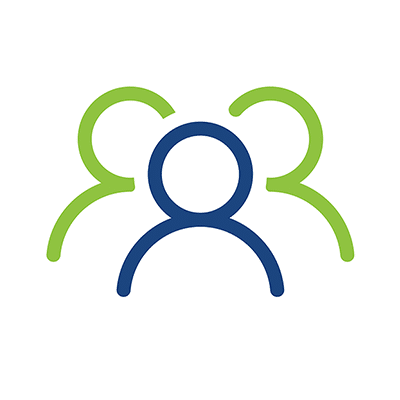The benefits plan administrator handles all of the details that make the benefits plan function for your business and employees. Are you a business or employer looking for group benefits coverage for your employees? You’re in the right place to discover the right quote for your team. Keep reading to learn more about the responsibilities of a benefit plan administrator.
Table of Contents
What Does a Benefit Plan Administrator Do?
If your company has group insurance for employees, the plan administrator must perform many duties on a timely basis, including maintaining information and updating it through contact with employees.
Do you know what these duties are? They include:
- Handling enrollment and removal
- Noting life event updates
- Tracking employment status
- Offering coverage options
- Keeping employees informed
- Reviewing paperwork
- Renewing benefit packages
Benefit administrators tackle these actions to manage the day-to-day benefits plan operations. Let’s take a more in-depth look at the most essential tasks that plan administrators handle regularly.
1. Handling Employee Enrollment and Removal
The primary task of a plan administrator is to enroll and remove the plan members. Administrators process the information of new hires and employees facing termination to update the system and prevent coverage issues from developing.
Late applications for employees achieving qualifying status can result in denial or force the applicant to supply additional medical evidence or pay increased premium payments. The benefits provider may also continue charging for terminated employees until they receive a notification.
2. Updating Key Life Events
Life events aren’t just for social media updates; these events can influence an employee’s coverage options and other critical variables that affect their finances and overall stability. Numerous life events that administrators must note will include:
- Name changes
- Marital status changes
- Dependent additions and removals
- Salary updates
- Beneficiary changes
Life events most commonly impact the benefit coverage details or cause changes in beneficiaries. Marriages, divorces, and adoptions will add or remove participants, while salary changes will influence available coverage options and protection levels.
3. Noting Employment Status Changes
Every employee will experience being a new hire, but how many will stay with the company until their retirement day? These changes in employment status directly affect plan eligibility and much more.
The administrator must track and update every employee’s employment status changes, which may include:
- Probationary
- Part-time
- Full-time
- Retirement
These changes can impact employee eligibility and coverage options. Without these necessary updates, employees might lose or never gain access to the benefits that the plan offers. Administrators need to update these changes quickly to prevent issues from developing.
Additionally, administrators must advise retirees and terminated employees who need resources to find continued conversion coverage after leaving the company plan. Conversion coverage can include life insurance, accidental death and dismemberment coverage, dental insurance, and more.
4. Communicating Coverage Options
A benefit plan administrator should know if each employee enrolled for every applicable benefit that applies to their profile. Every benefit plan provides a different selection of options for each employee tier, and the administrator needs to be able to communicate these details.
Some benefits packages offer excess coverage beyond the non evidence maximum. The administrator should inform employees of every benefit they qualify for in the retirement or insurance package.
Typical forms of excess coverage options may include, but aren’t limited to:
- Short or long-term disability insurance
- Accidental death or dismemberment insurance
- Life insurance
5. Informing Employees About the Claims Process
Employees may not be familiar with the details of the group insurance plan they participate in. The administrator is responsible for providing resources and information to employees that need to submit claims to the coverage provider.
These resources can include company blog posts, newsletters, administration platforms or software, e-books, pamphlet guides, and conversations with employees. Administrators can choose the most effective and relevant resources for the employees in their care.
6. Reviewing Statements, Billing, and Payments
Administrators are also responsible for checking statements and other paperwork for accuracy. Employers should be able to depend on the benefit plan administrator to handle the billing forms and provide timely payment. Administrators may also manage investments to ensure funds are available for benefit payments.
7. Renewing Plans as Necessary
Do you know when your benefit plan expires or if it features automatic renewal? The administrator also handles the benefits program renewals, managing the process with the benefits provider to ensure continual coverage for employees. Some providers offer automatic renewal to ease the process, but this option isn’t always available.
8. Fiduciary Responsibilities
A benefit plan administrator is the primary point of communication between the plan provisions and the employees. The individuals in these positions must ensure honesty and eliminate fraudulent behaviours.
Administrators must follow legal requirements, including:
- Acting only in the interest of employees using the plan and their beneficiaries
- Maintaining integrity in skills, knowledge, and diligence
- Diversifying investments
- Avoiding conflicts of interest and discrimination
- Ensuring plan expenses are reasonable
- Following plan documents
- Ensuring plans are consistent with legal regulations
These critical behaviours ensure the highest level of service from plan administrators. The position of benefit plan administrator carries a legal responsibility to the plan participants, demanding ethical behaviour and actions at all times.
Some companies prefer to use an in-house administrator or hire a third-party administrator to handle these activities. Other companies may utilize a committee of employees or a company executive to perform these tasks. In every case, the administrator(s) must meet the highest standards of confidentiality and responsibility.
Managing Employee Health and Wellness During the Pandemic
Learn how to better manage your employees, remote or in-office, with our article.
Compare Quotes for Benefit Packages with Group Enroll
While employees have access to some basic health and dental coverage through the Canadian government, employers can improve on that access while providing other valuable benefits. If you’re looking to offer group insurance benefits to your employees, you can compare insurance and other practical benefit plans through Group Enroll.
What are the benefits of group insurance and other beneficial plans? These plans connect your employees with additional coverage that no one else provides. Your company can hold the key that provides access to benefits and draws the attention of capable employees.
Are you ready to find the benefits package that will make a difference for your business? Group Enroll will help you compare rates from multiple providers to ensure you get the best price for your goals. You only need to fill out our free multiple quote form to open the door to great benefit rates.
Now that you know more about what a benefit plan administrator is responsible for, it’s time to get your personalized group benefits quotes from Group Enroll here. Learn more about finding the best benefits by emailing [email protected] or visiting 10 Great Gulf Drive, Unit 5, Vaughan, ON, L4K 0K7.








